Bruce Dowbiggin
Door Mats To Mats’ Darlings: Has Toronto Became The NHL’s Defining Brand?
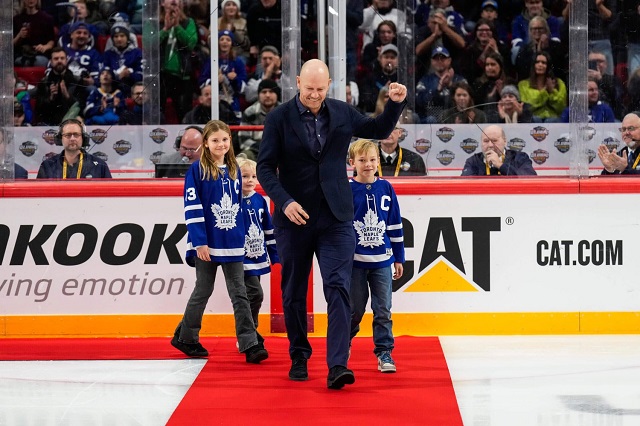
Imagine the Chicago Bears being the NFL’s most valuable property? Or the L.A. Angels being MLB’s prime franchise. Or the Brooklyn Nets being the NBA’s strongest brand?
That’s the best analogy for the Toronto Maple Leafs (estimated value US $2 billion-plus) being the NHL’s most valuable franchise. Former Leafs hero Mats Sundin told Swedish television this past weekend that, from his perch in Sweden, the Leafs are the strongest brand in the NHL. The former captain of the Buds compared them to soccer giants FC Barcelona or Man United as a sports property. The GOATs of team sports.
And no one laughed. This despite the fact that the Leafs are the Picassos of pain since their last Stanley Cup in 1967, never reaching even the Finals in all those years. After decades of misery, their fanatical fan base couldn’t cheer home Usain Bolt in a three-legged race. By Sundin’s standards, however, they’re the equivalent of the Catalans and the Red Devils.

It should boggle the mind. In addition to their sizeable markets Barca and Man U have long histories of championships in their leagues and in European competition. Their histories are studded with great names like Messi, Ronaldinho, Cristiano Rinaldo and Wayne Rooney (among many). Their value is immeasurable.
But because of their market size (southern Ontario is now about 12 million) the Leafs can claim a captive audience addicted to their losing. And a never-ending cash box that defies description. It was therefore poetic that the Stockholm Syndrome franchise spent this past week in Sweden, being lauded by the fans of Tre Kronor. Toronto’s Swedish star William Nylander was greeted as a rock star. It was ramped up even further when the insouciant sniper— he rides the subways in Toronto— scored the winner in OT against Minnesota.

Toronto’s claim on the NHL’s first pew might have been laughable till recently. The undisputed soul of hockey has always been Montreal, home of the 24-time Cup Canadiens. The Habs were class. The Leafs were crass. Montreal was Jean Beliveau. Toronto was Tiger Williams. Wearing the tricoleurs bestowed a heritage on the wearer. Wearing the maple leaf was, as we wrote this past April, a testament to futility.
And yet, without winning a single honour, the Leafs have claimed undisputed possession of the brand as NHL’s model team. The decline of the Habs as a constant contender probably has much to do with it. Their 24th— and last— Cup was in 1993. Since trading Patrick Roy in 1998, they’ve lost their glitter.
Current Montreal GM Kent Hughes sums up the new reality when asked if the Habs can win without a superstar. “Everyone would like McDavid or Draisaitl,” he told Slovak journalist Martin Toth-Vaňo. “We’d like them, too… Do we need a star? Edmonton is at the bottom of the table with two of the biggest stars in the league.”
Sure, Kent. The Habs’ talent gap has allowed the Leafs to horn in on the belt as the NHL heavyweight. For the corporate set, at least, Toronto is the home of the English language communications industry. The people who decide the lineups for highlight shows and who to use in advertising live in the bosom of Leaf Nation, and the product reflects as much.
For some time eager investors have sought to convince the NHL that, like L.A. and New York’s tristate area, Toronto’s market should be shared amongst at least two teams. So far, commissioner Gary Bettman has been unable to create an indemnification plan for a competing squad that would satisfy the contented MLSE partners who own the Leafs. Suffice to say it would be a billion dollars-plus should common sense prevail.
So buckle up. Toronto has one of the top teams again this year. A Stanley Cup would not defy reason. Except… don’t you always satisfy your customers in business? It would appear that Leafs fans love losing. Why mess with a good thing?
Sign up today for Not The Public Broadcaster newsletters. Hot takes/ cool slants on sports and current affairs. Have the latest columns delivered to your mail box. Tell your friends to join, too. Always provocative, always independent. https://share.hsforms.com/16edbhhC3TTKg6jAaRyP7rActsj5
Bruce Dowbiggin @dowbboy is the editor of Not The Public Broadcaster A two-time winner of the Gemini Award as Canada’s top television sports broadcaster, he’s a regular contributor to Sirius XM Canada Talks Ch. 167. Inexact Science: The Six Most Compelling Draft Years In NHL History, his new book with his son Evan, was voted the seventh-best professional hockey book of all time by bookauthority.org . His 2004 book Money Players was voted sixth best on the same list, and is available via http://brucedowbigginbooks.ca/book-personalaccount.aspx
Bruce Dowbiggin
Canadians Thinks America Owes Them. Trump Has Other Ideas
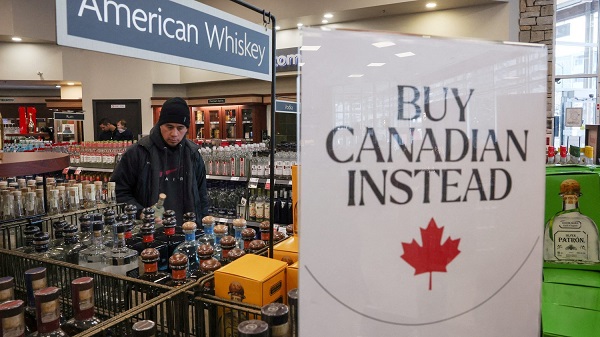
Breaking: It’s now being reported that in the 2024 U.S. election, zero Canadians voted for Donald Trump. In fact, zero Canadians voted for anyone on the ballot. They’re not allowed to. And yet rage monkeys in the Canadian media seem to have the idea that Canada is— and should be— an immediate priority of POTUS 47.
Here’s Globe & Mail/ CBC wind therapist Andrew Coyne about ten exits past normal on the idea of Donald Trump on Canadian soil. Okay, on Alberta soil. “We’re going to roll out the red carpet for the wannabe dictator of America at the very moment he is moving to suppress dissent with armed force?” (You mean like the Truckers Convoy?)
Cartoonist Michael DeAdder, who likely cries if you use improper pronouns, says “Hold my kombucha”. His latest etching has Trump asking a veteran what he did in the war. The witty retort is “Fought against people like you”. Get it? Trump murders six millions Jews. But The Hill keeps this guy working, and the laughs just keep on coming. Free speech!

The presumption is jaw-dropping. Even as Trump’s approval rating hits 53 percent, Canadians online were echoing Democrats’ fever dreams of forming a shadow government to take over from Trump via coup. This sense of impunity at a distance is why the Canadian government— along with other drive-by virtue signallers UK, Norway, New Zealand, and Australia— have imposed sanctions on two sitting members of the Israeli cabinet. They know it will rile Trump’s America.
For ordinary Canadians, Trump became a post-it note to justify giving Team Liberal another swing at ruining the nation. “We used to be such friends! He’s a tyrant.!” This just in: Love him or hate him Trump is employed by Americans to do their bidding. He’s not a sentimental buddy of Canada who’ll cut us some slack for old time’s sake. He has no remittance from Canada to please the Laurentian elites. If your defence is non-existent and your military gender-obsessed: you had it coming.
Are his policies jostling Canada? Absolutely. Read Art of the Deal. The 51st state jibe when Justin soiled himself was rude. But it worked on pliant Canadian liberals. Now the The Little Banker is disavowing the dissolute decade of Trudeau while employing Conservatives’ policies on defence spending, inter-provincial trade and border security. Hell, he’s naming longtime Tories to his personal staff.

In the end Carney knows this ain’t mock Parliament. That his dossier begins and ends with satisfying the beast to the south. None of this should be a surprise. Yet Canadians dozed when Trump made clear in his election campaign that the American economy is the greatest in the world. If you want to fish in that pond it’s not going to be for free. That means tariffs for a range of U.S. industries that couldn’t compete in a Biden world.
We can argue how well tariffs work, but Trump wants them to reduce taxes on the people who elected him. Not the Canadians who fly first class but pay economy. And who have pushed his approval ratings into the 50s, higher than ever before. (Likely to spike higher after the No Kings Riot season peters out.)
No wonder Canadians preferred the guy before Trump, the senile sock puppet whose government was run by anonymous figures using the auto-pen. Sleepy Joe let Canada slide into mediocrity and financial peril without any judgement. It was comfortable. Then The Donald had the nerve to expose the ditch Canada was in.
Canada, Trump pointed out, was delinquent on its defence, harbouring Chinese drug lords, printing money like Canadian Tire and its banks were involved in money laundering. That was the nice stuff. Try Organized fentanyl networks operating with impunity in the largest cities of the nation So dumping on Trump in salty cartoons allows Canada’s Mod Squad to ignore the real issues that should have been litigated in the April election.
We have written extensively about the ruse that was played on gormless Canadians in “U.S. Voters Smelled A Rat But Canadian Voters Bought The Cheese” We have catalogued Canada’s drug and money laundering disgrace in “Chinese Gangs Dominate Canada: Why Will Voters Give Liberals Another Term?” We’ve described the real-estate bubble economy created by Trudeau and sidekick Carney that threatens to crash the economy and ruin seniors’ pensions in
In the end, it is still la-la-la-la We Can’t Hear You. Trump-obsessed Boomers more concerned with the equity in their jumped-up bungalows gave the finger to the next generations and blamed it all on Orange Man Bad. In the monotone of Canadian political comment it all seemed so easy. Turn against Trump. Cash another dividend. Cheer on MSNBC and CNN bitch sessions.
The Family Compact don’t get it. Their Antifa heroes down south plan demos and “nonviolent” activity to crater the public resolve. In Canada that still works. But in the U.S. the Covid reverb is hitting the natural governing class of the nation. While they craft fine phrases about democracy the consumers remember them using a virus to stop society.
The appetite for Gavin Newsom blovaitors and Jen Psaki fart catchers is crashing in America. Riots may be coming in the U.S., but it won’t be like George Floyd and Covid and the pussy hats. At some point Canada’s docile classes better wake up, too. America owes them nothing. They need to earn the respect.
Bruce Dowbiggin @dowbboy is the editor of Not The Public Broadcaster A two-time winner of the Gemini Award as Canada’s top television sports broadcaster, his new book Deal With It: The Trades That Stunned The NHL And Changed hockey is now available on Amazon. Inexact Science: The Six Most Compelling Draft Years In NHL History, his previous book with his son Evan, was voted the seventh-best professional hockey book of all time by bookauthority.org . His 2004 book Money Players was voted sixth best on the same list, and is available via brucedowbigginbooks.ca.
Bruce Dowbiggin
Simone Biles Fails To Stick The Landing Going After Riley Gaines
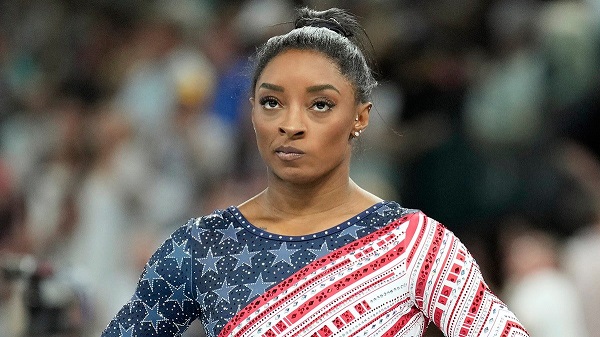
Some ideas are so stupid that only intellectuals believe them. George Orwell
Or, in the case of Olympic legend Simone Biles, only gymnasts believe in the incendiary issue of trans men competing in women’s sports. Biles, who has made a secondary career as an object of pity, took exception when former swimmer Riley Gaines, an opponent of trans men competing against women, sent a picture of Minnesota softball team that recently won a state title with a pitcher who is reported to be transgender.
“Comments off lol,’ Gaines wrote in response to the post which wasn’t permitting any comments from the public. “To be expected when your star player is a boy.”
That brought Biles into the fray. ‘You’re truly sick, all of this campaigning because you lost a race. Straight up sore loser. ‘You should be uplifting the trans community and perhaps finding a way to make sports inclusive OR creating a new avenue where trans feel safe in sports. Maybe a transgender category IN ALL sports!! ‘But instead… You bully them… One things for sure is no one in sports is safe with you around!!!!!’
She then poked Gaines again, saying: ‘Bully someone your own size, which would ironically be a male.” (Gaines husband is 6-foot-4)

The loser reference was to Gaines having lost to a trans swimmer in an NCAA race. Since then Gaines has launched a campaign to outlaw biological males from competing with cisgendered girls and women. She has testified in the U.S. Congress and has appeared in numerous interviews espousing a position supported by the vast majority of Americans.

One might think the proof of this position— unquestioned as recently as a decade ago— would be obvious. But Biles and gender radicals who’ve tried to make trans into the Emancipation Proclamation of the 21st century are not giving up the fight.
Here’s someone named Nancy Armour in USA Today. “There is no scientific evidence that transgender women athletes have a physical advantage over cisgender women athletes, but that hasn’t stopped Gaines from claiming they do..” When legislation banning trans men in girls/ women sports was presented in the U.S. Congress 106 Democrats voted against the motion. The chattering class on CBC, MSNBC and CNN likewise have a cohort of those opposing the ban.
But it was the outburst from Biles that most appalled fans who’d worshipped her as the GOAT of Olympic gymnastics and then sympathized with her victimization by Dr. Larry Nasser. Even when she bailed on her teammates at the 2024 Games they cut her slack. But suddenly a woman who’s preached against body shaming and intolerance was deriding a fellow athlete’s body and mocking her complaints.
Critics were quick to post Biles’ hypocrisy about compassion, citing her own tear-stained testimony about how she was taken advantage by a doctor. Here’s how we described her psychological distress last August during the Olympics. “Prominent among them was gymnast Simone Biles who described the abuse she’d suffered from a male trainer and on social media as the greatest female gymnast in history. Even as she added more golds to her mantle she’d seemed unable to find peace in her accomplishments.
“Due to mental blocks, she’d had to step away from the sport for a time to get her head straight. She had a lot of company from fellow competitors who described sexual harassment and intimidation on social media for their unhappiness. (Hence the constant mental health commercials on the TV broadcasts.)”
Now the same role model is mocking Gaines? It seems unthinkable. As for the claims that men have no advantage against women, it was pointed out that there are zero women who try to reverse the equation, going into men’s sports. They show the hard truths about competitive records of men versus women in a range of sports. They describe the physical risks for women playing against larger, stronger men. Here. Here. And here.
It’s still stunning to see Biles toeing the radical LGBTQ line while asking for traditional pity of a victimized woman herself. Or the amount of support that the cause has garnered from progressives throughout society. When did people became so obtuse about the growth this societal contagion?
We wrote earlier this year about how such notions take hold. MacDonald Laurier Institute fellow Mia Hughes charted a history of similar social contagions such as bulimia and multiple-personality disorder. “In 1972, British psychologist Gerald Russell treated a woman with an unusual eating disorder involving binging and purging. Over the next seven years, he saw a further 30 woman presenting with the same condition. In 1979, he wrote a paper published in Psychological Medicine, in which he gave it the name bulimia nervosa….
“Then something remarkable happened. The illness swept the globe like wildfire… affecting an estimated 30 million people by the mid-1990s, the majority of whom were teenage girls and young women. The explanation for this rapid spread is what philosopher Ian Hacking calls ‘semantic contagion’ – how the process of naming and describing a condition creates the means by which the condition spreads. The epidemic of multiple-personality disorder in the 90s was spread this same way… Multiple studies demonstrate the media’s culpability in the spread of social contagions.”
The new contagion is trans athletes. USA Today is just one example of how influencers try to legitimize campaigns to boost their own self esteem. As the battle to reverse the trans incursion shows, there are only too many willing to play politics in the gender debate. Like the pro-Palestinian movement in North America the trans athlete hoax exists is a bubble where reality and fiction can co-exist, knowing they’ll never be put to the test.
Orwell called it doublethink “the power of holding two contradictory beliefs in one’s mind simultaneously, and accepting both of them.” Biles and the liberal elites have it mastered. Nursing their grievance while finding it a fault in others.
Bruce Dowbiggin @dowbboy is the editor of Not The Public Broadcaster A two-time winner of the Gemini Award as Canada’s top television sports broadcaster, Bruce is regular media contributor. The new book from there team of Evan & Bruce Dowbiggin is Deal With It: The Trades That Stunned The NHL & Changed Hockey. From Espo to Boston in 1967 to Gretz in L.A. in 1988 to Patrick Roy leaving Montreal in 1995, the stories behind the story. In paperback and Kindle on #Amazon. Destined to be a hockey best seller. https://www.amazon.ca/Deal-Trades-Stunned-Changed-Hockey-ebook/dp/B0D236NB35/
-

 Crime1 day ago
Crime1 day agoHow Chinese State-Linked Networks Replaced the Medellín Model with Global Logistics and Political Protection
-

 Aristotle Foundation2 days ago
Aristotle Foundation2 days agoWe need an immigration policy that will serve all Canadians
-

 Addictions1 day ago
Addictions1 day agoNew RCMP program steering opioid addicted towards treatment and recovery
-
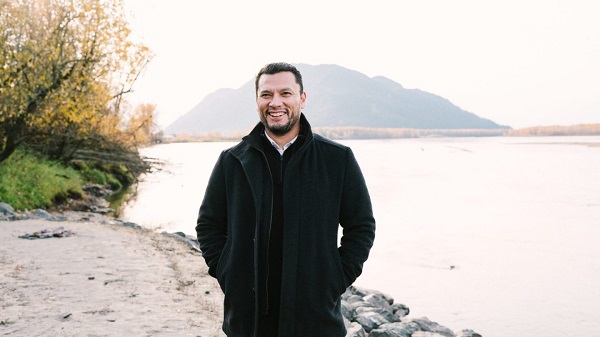
 Business1 day ago
Business1 day agoNatural gas pipeline ownership spreads across 36 First Nations in B.C.
-

 Business14 hours ago
Business14 hours agoEU investigates major pornographic site over failure to protect children
-
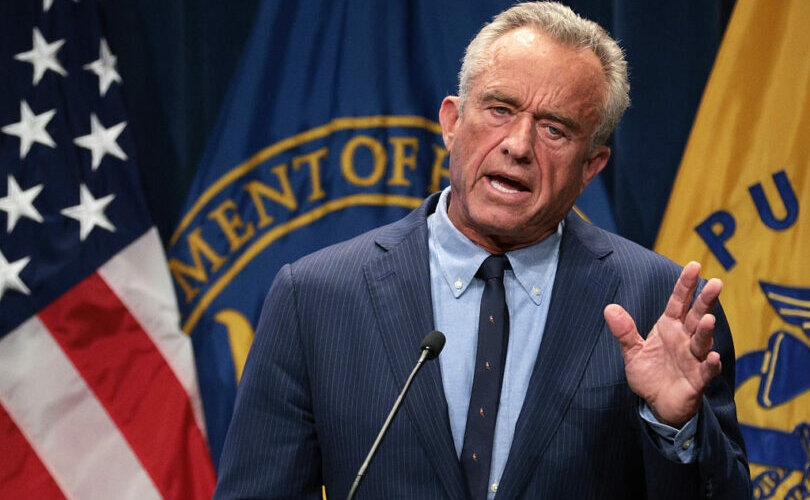
 Courageous Discourse1 day ago
Courageous Discourse1 day agoHealthcare Blockbuster – RFK Jr removes all 17 members of CDC Vaccine Advisory Panel!
-
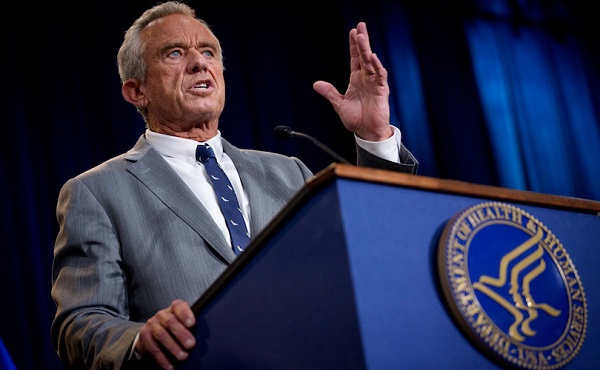
 Health1 day ago
Health1 day agoRFK Jr. purges CDC vaccine panel, citing decades of ‘skewed science’
-
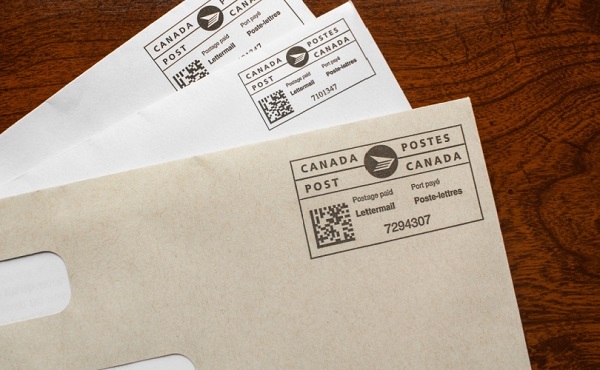
 Censorship Industrial Complex1 day ago
Censorship Industrial Complex1 day agoConservatives slam Liberal bill to allow police to search through Canadians’ mail

